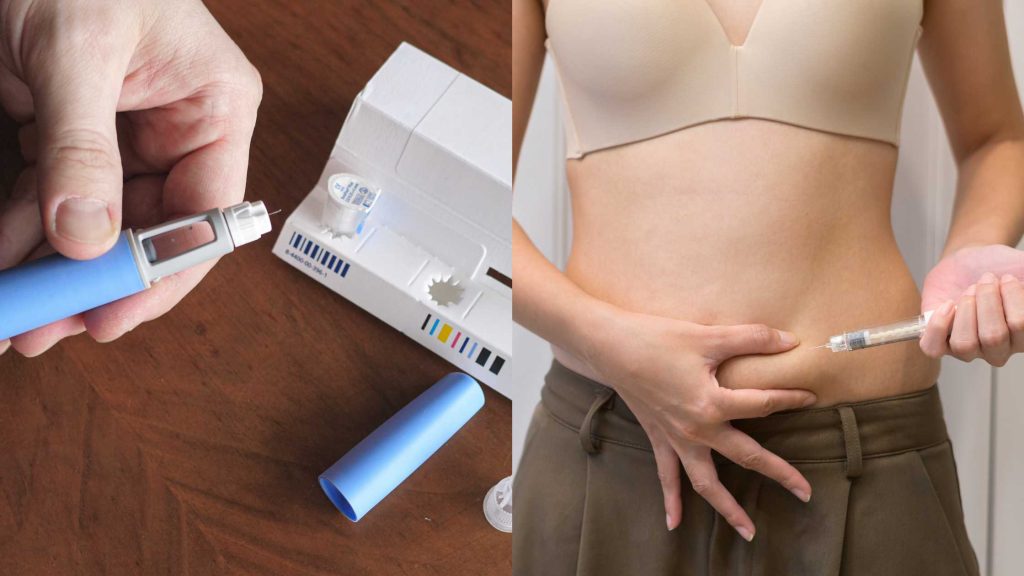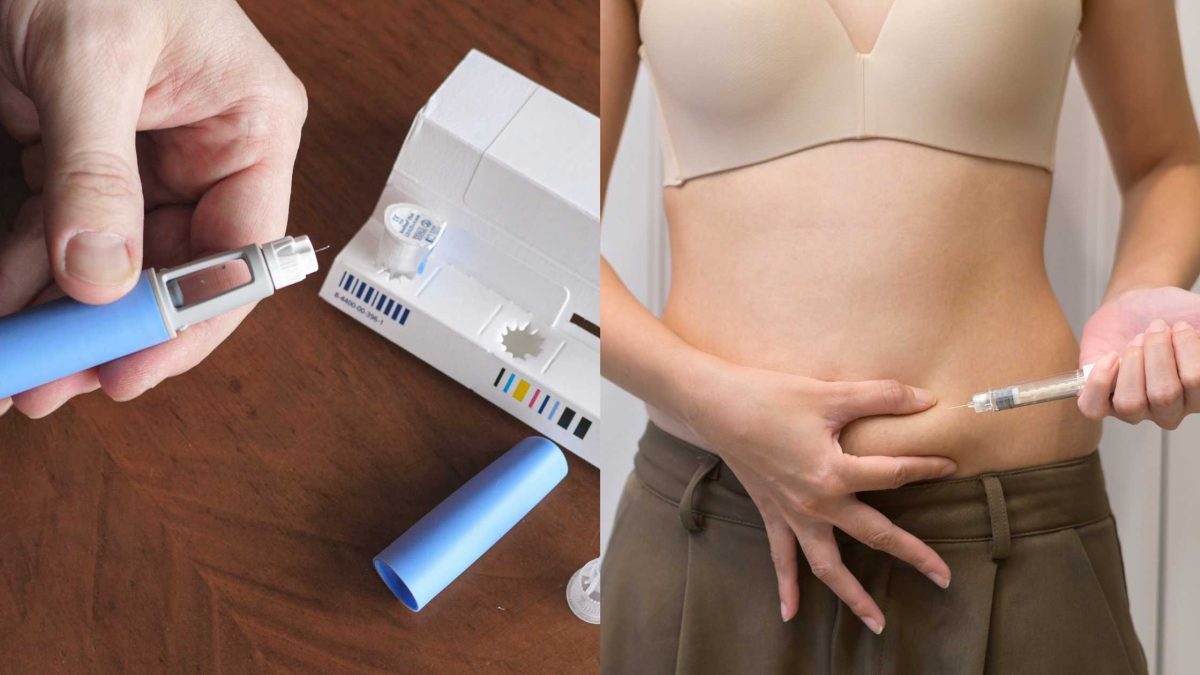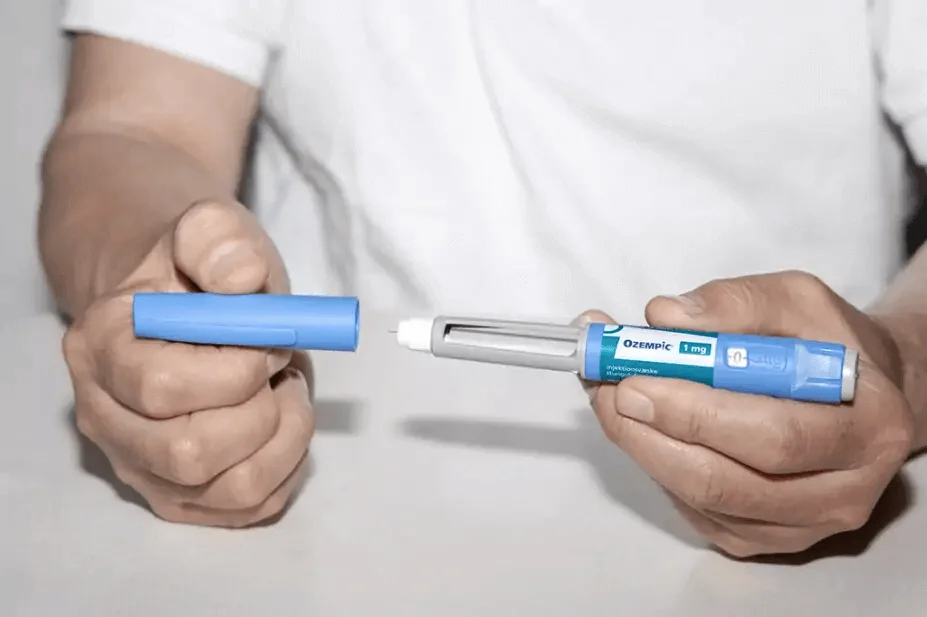Key Takeaways
-
Pregnancy and breastfeeding bring about typical physical transformations such as loose skin, stretch marks, muscle separation, and those pesky leftover pockets of fat that so many mommies yearn to eliminate with body sculpting.
-
From fat reduction to skin tightening, muscle toning and cellulite smoothing, there are non-surgical and surgical options. Any busy mom can gift herself body sculpting with low-downtime treatments.
-
Hybrid or combination therapies typically provide the most complete and time-effective outcomes, so work with a practitioner to design a custom plan for specific postpartum trouble areas.
-
Book a professional consultation, prepare questions on risks and recovery, and account for postpartum recovery and breastfeeding when planning treatment timing.
-
Set realistic expectations. Multiple sessions or maintenance and healthy lifestyle habits are usually needed to maintain outcomes and support long-term results.
-
Act like a single person again. Treat body sculpting as a gift to yourself after years of raising kids.
Body sculpting for yourself as a present to yourself after raising kids is an individual decision that can rejuvenate shape and confidence.
It includes non-surgical and surgical treatments addressing stubborn fat, loose skin, and muscle tone. Most moms and dads select treatments because their results mean enhanced comfort and clothes that fit better.
Expenses, downtime, and attainable results differ according to procedure and specialist. The body of the post outlines typical techniques, timelines, and questions to ask providers.
The Post-Motherhood Body
Pregnancy, childbirth, and breastfeeding leave distinct impressions on the body. Loose skin, stretch marks, and pockets of stubborn fat remain after weight shifts. Muscles can loosen or separate, particularly in the abdomen. Your pelvic floor could be weak. Breasts can sag and you can lose some volume. These are physical facts, not failures, and they reflect what the body did: grow and feed a child.
Most moms observe a softer tummy and wider hips. Your thighs and hips might have a little extra fat on them. Diastasis recti, or abdominal muscle separation, leaves the belly looking rounded even after weight loss and basic sit-ups won’t repair it. Pelvic floor weakness can cause leaking with cough or exercise. Alterations in breast tissue can leave the chest sagging or deflated. These problems influence daily comfort, stance, and clothing fit.
We all wrestle with body image issues. Mothers scare themselves, guilt themselves, and shame themselves for not living up to the pictures they see in the magazines, on the Internet, and in the movies. That pressure piles stress onto an already exhausted body. Practicing body gratitude helps: focus on what the body can do, not only how it looks.
Remember, the post-motherhood body is a tale of strength, affection, and evolution. Thanking the body for its service can help quiet brutal internal monologues and soften the compulsion for fast fixes.
Many women choose body sculpting as a form of restoration rather than vanity. Options range from noninvasive fat reduction and skin-tightening treatments to surgical choices like abdominoplasty or breast lift. Where to start: consult a licensed specialist who assesses muscle separation, skin quality, and overall health.
A realistic plan addresses what is possible and sets clear steps, such as pelvic-floor physical therapy before any surgery or combining targeted fat removal with skin tightening for better contour.
Healing requires nurturing and time. Your post-motherhood body may be exhausted and in need of additional rest, nourishment, and slow re-introduction to exercise. Self-care and self-compassion are just as important as the treatment selected.
Embracing the post-motherhood body requires a shift in attitude: recognize strength and resilience, and allow choices that improve comfort and confidence. Medical advice, smart goal setting, and a combination of physical therapy, healthy habits, and, if you want, body sculpting in a staged plan is practical.
The Sculpting Gift
Body sculpting is a really effective self-care gift for moms who want to take back their bodies after years of raising an army. It provides laser-focused solutions for those pesky pregnancy and nursing-induced transformations like excess fat, lax skin, weakened muscles, and cellulite. They can last three to five years, and with a healthy lifestyle, they can last even longer.
Expect a gradual change: the body flushes out destroyed fat cells over weeks to months, often up to 12 weeks. Most plans require two to three sessions for full effect.
1. Fat Reduction
Zap postpartum flab in the tummy, love handles, and thighs through non-surgical or surgical means. Non-surgical options such as CoolSculpting, SculpSure, and ultrasound-based treatments eliminate fat cells by freezing or heating them. CoolSculpting can reduce fat in a targeted area by roughly 20 to 25 percent.
Laser-based systems and other devices operate on these same principles. Liposuction is still an option if more volume needs to be removed or if contouring requires an instant shift.
Non-surgical approaches kill fat cells that the body subsequently clears over time. This means slimming becomes evident within a few weeks, with multiple patients noticing dramatic change within months. Up to 90% of patients see visible change after sustained treatment.
Surgical routes excise fat right away, but they involve longer convalescence and surgical risk. Two of the most popular services for new moms are CoolSculpting and SculpSure as they have minimal downtime and usually do not require general anesthesia. For planning purposes, give yourself at least two treatments and anticipate results to continue to present over several months.
2. Skin Tightening
Post pregnancy loose skin is common and can often be improved with non-invasive skin tightening. Radiofrequency, infrared, or ultrasound-based devices encourage your body to produce collagen and generate new skin, resulting in tighter, smoother skin over weeks.
These therapies are effective on their own or combined with fat removal to revive contours and feel. When combined with other procedures, skin tightening can help create a cleaner silhouette.
Newer systems cause little pain and have quick recovery for moms who can’t be away from baby for months on end.
3. Muscle Toning
Pregnancy has a tendency to weaken core muscles. Muscle toning treatments such as EMSCULPT and EMSCULPT NEO utilize electromagnetic pulses to induce deep contractions. These contractions rebuild muscle strength and tone abdominal profile faster than traditional exercise for certain patients.
Incorporate sessions into a wellness routine to maintain posture, a lean tummy, and everyday vitality. These treatments come particularly handy when gym time is scarce.
4. Cellulite Smoothing
Cellulite treatments disintegrate fibrous tissue and increase circulation to soften hips, booty, and tummy. Methods range from mechanical massage to focused energy technology, and combining them with fat reduction and skin tightening provides more balanced outcomes.
Diminishing visible cellulite can enhance post-pregnancy body image and confidence, which encourages continued self-care.
5. Combination Therapies
Merge fat elimination, skin tightening, and muscle toning for quicker, more comprehensive results. Sculpting Gift: A tailored plan spaces treatments to permit recovery and amplify impact. Generally, begin with fat blasting, then tightening, then toning.
Integrated attention can reduce overall time to notice transformation and enhance longevity of outcomes. Preserve gains through balanced exercise and healthy habits. Sculpting is a stride toward sustainable wellness, not a quick fix.
Beyond The Physical
While body sculpting may begin as a decision about how clothes fit and look, it spills into feelings, everyday life and self-maintenance. For many mothers who spent years putting kids first, the post-baby body can drag both mood and self-image down. Body contouring can bring back a feeling of body familiarity. Research reveals that patients who take these treatments experience increased body satisfaction and self-esteem.
That shift in self-view can be steady and practical. Feeling more like your pre-pregnancy self can cut down on daily friction, like avoiding certain outfits or stepping back from social invites.
Recognize the emotional and psychological benefits of body sculpting, including improved mood and self-confidence.
Body contouring can make a difference in the way people feel about themselves. Others describe feeling less self-conscious in public and more at ease in social or professional situations. A better mood can result from less stress about looks, which tends to lead to more socialization and less isolation.
Examples include someone who stops avoiding pools or gyms after a tummy procedure or a new parent who takes more family photos without worry. Not promises, but typical results. Mental health benefits are documented in studies and patient accounts, with many reporting that self-assurance and daily happiness increased post-therapy.
Acknowledge that restoring the postpartum body can positively impact intimacy, relationships, and daily activities.
Postpartum body changes are about more than just appearance. Comfort in bed, wanting to join in couple activities, and gliding through daily tasks all tie back to your physical self. A few women report operations brought them back to the moment with partners, less burdened by pain or insecurity.
This can enhance communication and openness to return to joint schedules. For overwhelmed parents, these mini-wins, such as less chafing, better posture, and clothing that fits more smoothly, decrease friction and release energy for connections and work.
Emphasize the importance of self-care for mothers in managing stress, fatigue, and the demands of a busy lifestyle.
Opting for body sculpting can be positioned as a form of deliberate self-care. For any parent accustomed to handing over the majority of their time, this is an intentional action to put themselves first. Others experience an uplift in vigor and drive post-treatment, which aids with day-to-day stressors.
For instance, being more willing to work out without pain or to take time for social or professional endeavors. This decision can communicate to siblings that parents’ needs are important. Think of it as celebrating the work you’ve done raising kids by scheduling some time for your own health and happiness — setting realistic goals, talking options over with a qualified provider, and matching any procedure to recovery time that fits family life.
Your Personal Journey
Body sculpting can be a realistic, deliberate decision for moms who want to take back areas of their bodies post-mommy years. This part tells you how to transition from contemplating change to planning and executing it in a clear, informed manner. It includes how to begin, what to inquire about at consultation, when to book treatments, and how to establish and monitor realistic expectations while caring for your entire self.
The Consultation
Schedule a professional consultation to assess specific body areas and discuss desired outcomes. A qualified clinician will review goals for areas such as the abdomen, hips, thighs, arms, or breasts and recommend non-invasive or surgical options based on tissue quality and skin laxity.
-
Inquire about the clinician’s training, board certification, and experience with postpartum patients.
-
Request before‑and‑after photos of patients with similar concerns.
-
Clear recovery time and time off work and childcare duties.
-
Inquire about which treatments are safe during breastfeeding or when to wean.
-
Go over costs, financing, and what follow-up or revision care looks like.
Take into account medical history, postpartum timing, and lifestyle to find the best treatments for you. Take advantage of this consultation to establish expectations and learn the benefits, risks, and recovery for each procedure.
Be honest about activity. Most moms do more physical work than they think and this plays a role in planning recovery.
The Timing
Select body sculpting timing based on your postpartum recovery, breastfeeding, and family schedule. Wait until the body has settled after delivery, which is usually a few months. Plan sessions with the following table in mind.
|
Factor |
Consideration |
Suggested timing |
|---|---|---|
|
Breastfeeding |
Many procedures advise waiting until breastfeeding ends |
3–6 months after weaning |
|
Physical recovery |
Return of pelvic floor and strength |
6–12 months postpartum for surgical options |
|
Family schedule |
Partner help, childcare, work leave |
Align with school breaks or partner’s leave |
Put yourself first and find time for treatment without neglecting your mommy duties. Organize dependable babysitting, plan buffer days for recuperation, and establish reasonable schedules for return trips.
The Expectations
Have reasonable expectations about results, recovery, and maintenance of body sculpting procedures. Realize that although we see dramatic results, you may need more than one session or combination therapies for the best results.
Recognize that body sculpting accentuates natural shape and contours, not substitutes for a good diet and exercise.
-
Shoot baseline photos from the same angle and lighting to monitor progress. Repeat every 4 to 8 weeks.
-
Maintain a brief record of measurements, energy levels, and side effects following treatments.
-
Mark any lifestyle changes like sleep, stress, or activity that impact results.
There will be days you feel sure and days you don’t. That’s natural. It’s demotivating to compare yourself to stylized photos on the internet. Body positivity, self‑compassion, and celebrating resilience help keep the process balanced.
A Lifelong Commitment
Mommy body sculpting isn’t a quick fix. It lives in the context of the broader life perspective that encompasses parenting, work, relationships, and goals. Such life decisions tend to introduce profound disruption in habits, budget, and self-concept. Pregnancy, childbirth, and those early years of child care reconfigure the body and day-to-day life.
Approaching body sculpting as a lifelong commitment involves planning for maintenance, consistent habits, and the changes that time brings. Dedicate yourself to wellness habits and healthy lifestyle decisions to sustain results. Consider body sculpting a waypoint, not a destination.
Include some light strength work twice a week to maintain muscle tone, 30 to 45 minutes of mixed cardio three times a week for cardio health, and mobility or stretching sessions to keep stiffness at bay. On the food side, accompany balanced meals with lean protein, vegetables, whole grains, and healthy fats. Think portion control more than dieting.
Use metric measures when tracking progress: servings of 100 to 150 grams of protein portions, 200 to 300 grams of vegetables per day, and 30 to 50 grams of healthy fats. These decisions assist in maintaining skin elasticity, muscular health, and metabolic well-being that prop sculpted ends.
Add exercise, proper meals, and sleep to your lifestyle to help your body restore itself. Postpartum life and parenting demand energy, so build realistic steps: short home workouts of 20 minutes on busy days, meal prep on weekends, and sleep hygiene practices to improve rest quality.
If children or work reduce available time, try micro-habits: 10-minute walks, plank sets between tasks, or preparing double portions for later use. Recovery and downtime are part of every procedure. Heed clinician instructions on downtime and gradual activity to prevent regression.
Just plan for occasional maintenance treatments or follow-ups as advised for enduring enhancements. A lot of sculpting techniques aren’t one-and-done: injectables need upkeep, device treatments need sessions, and minor fixes demand touch-ups.
Book follow-ups at the suggested timelines, with some non-surgical options every 6 to 12 months and surgical results annually. Maintain logs of treatments, before-and-after pictures, and documentation on how lifestyle changes impacted results. Invest in long-term care by approaching body sculpting in the same way you might a marriage, having children, or a career ambition, planning time and money across years.
Body positivity and self-care are lifelong, not just a postpartum transformation. A lifelong commitment can define who we are — our character, our beliefs, and even our interests. Use self-care rituals that fit your life: short meditations, therapy when needed, social time, or creative hobbies.
These support sanity and hold in check grounded expectations about liberty, security, and transformation.
The Emotional Reward
Body sculpting provides more than a new shape. It symbolizes a shift in self-esteem post years of parenting. Many moms talk about the emotional reward of motherhood as deep joy and purpose. That feeling can sit alongside exhaustion, overwhelm, or a feeling of lost self.

Choosing a body sculpting treatment often begins as a practical step. Yet, it can quickly take on symbolic meaning: a pause to tend to oneself, a visible nod that personal needs matter now too. For certain, it re-establishes control over their physique. For others, it validates a new lease on life. The goal is not to wipe away the parenting process. It is to inject a purposeful moment of nurture that aligns with the internal transformation most parents already experience.
Reinvigorated confidence tends to follow tangible results and confidence is practical. They tell me that they feel better, have more energy, and are more willing to get back to work on the things that once dropped off—exercise, social activities or work projects.
We’ve seen in our research that the emotional rewards of parenting can decrease stress and increase happiness for years following. When a parent feels physically more like themselves, those trends will only reinforce. Better sleep or less body anxiety post-treatment might liberate mental bandwidth for attention and wonder. For some, the boost is immediate; for others, it accumulates as they observe subtle changes in their clothing or posture.
Sharing the journey counts. Discussing goals, decisions, and outcomes with trusted peers or family members builds accountability and reduces stress. Online groups and forums provide useful advice, transformative narratives, and local clinic advice that contextualize expectations.
Real examples include a woman who posted recovery updates and found encouragement and sensible advice on pain management. Another joined a local walking group after a skin-tightening session and found renewed social ties. Support networks assist with controlling the delta between anticipated and actual results and normalize the ambivalence that can accompany any transition.
Viewing body sculpting as honoring your parenting work rather than an obligation recontextualizes the act. It could be an intentional commemoration of the physical strain and ecstasy introduced by child-rearing. Cultural norms and personal temperament influence the intensity of that reward.
Some are compelled to meet ideals, while others experience relief at having reclaimed a sense of self. The emotional reward of parenting is long-term and evolving, so sprinkling in a moment of self-investment here and there can be a practical step toward a steadier, kinder sense of identity.
Conclusion
Body sculpting can be a definitive, compassionate gift to yourself after years of nurturing the family. It will deliver actual transformation in form, carriage, and fluidity of motion. It can relieve tension from overworked muscles, assist in clothing fitting, and accelerate a comeback to active days. Most moms report the work elevates their spirits and returns a sense of self that was lost during motherhood. Pick a licensed provider, explore results from others like you, and design a plan that matches your lifestyle and budget. Tiny, incremental steps maintain gains and reduce danger. Give it the gift mentality with focused intentions and gentle nurture. Find out, explore realistic questions, and begin where you’re comfortable.
Frequently Asked Questions
What is body sculpting and how can it help after raising children?
Body sculpting as a gift to yourself after raising the kids. Tackling post-pregnancy stretched skin and stubborn fat, it helps moms by restoring contours while enhancing comfort and confidence.
Is body sculpting safe after pregnancy and breastfeeding?
While most procedures are safe post-pregnancy and breastfeeding, timing does matter. Wait until your body has settled and you are done nursing. See a board-certified provider to discuss your individualized risks.
Which body sculpting options are common for post-motherhood bodies?
Popular choices consist of liposuction, tummy tuck, body contouring, and non-invasive fat reduction, such as cryolipolysis and radiofrequency. All tackle different issues, including excess skin, separated muscles, or stubborn fat.
How long is recovery from body sculpting procedures?
Recovery varies. Non-surgical treatments often require minimal downtime of a few days, while surgical procedures can need two to eight weeks. Your surgeon will provide a customized timeline depending on the procedure and your health.
Will body sculpting affect future pregnancies?
Surgical results can be compromised by future pregnancy. Most surgeons advise you to be done having children before undergoing any significant surgeries. Non-surgical treatments should be less impacted, but check with your provider.
How should I choose a provider for post-motherhood body sculpting?
Opt for a board-certified plastic surgeon or an experienced licensed clinician in post-pregnancy care. Check out before and after photos, read verified reviews, and inquire about complications and follow-up care.
What realistic results and benefits can I expect?
Anticipate better body contours, tightened skin, and feeling good in your clothes. Results differ by procedure, anatomy, and lifestyle. A good provider will put you on a maintenance plan.

















